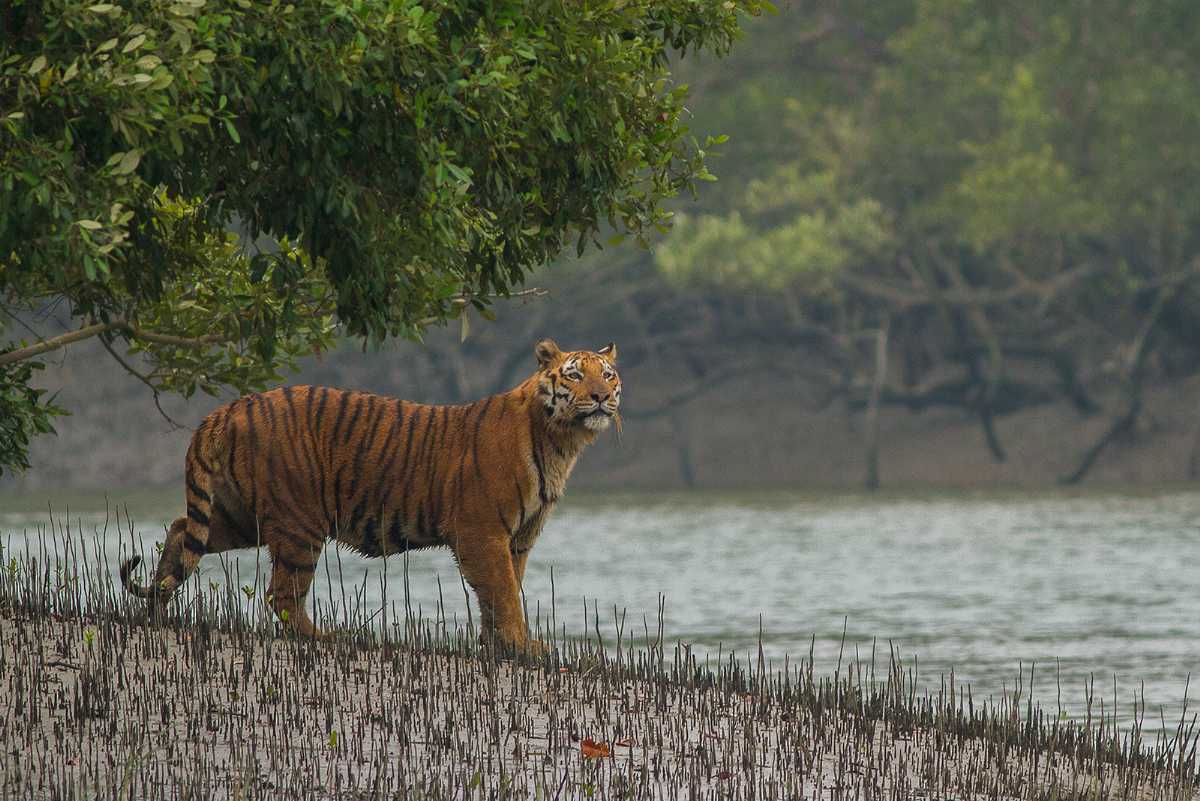Known for hosting the biggest mangrove forests in the world, Sundarbans National Park is located around 110 Km south of Kolkata in West Bengal, India. It is also a Tiger Reserve and a Biosphere Reserve famous for being the home of the Royal Bengal tigers, among others, including roaring rivers and beautiful estuaries. Sundarbans National Park is a part of the Sundarban delta, which extends into Bangladesh. It is a UNESCO world heritage site with a large variety of birds and animal species, including reptiles such as salt-water crocodiles.
Shared between India and Bangladesh, the Sundarbans meaning beautiful forest, was declared a UNESCO heritage site in 1984. This area has a quiet charm that amazes visitors with the simplicity and uniqueness of its ecological balance despite offering habitat to some of the most dynamic and awe-inspiring flora and fauna. These forests are, in fact, the last remaining stands of the mighty jungles which once covered the Gangetic plains. Since 1966, the Sundarbans have been a wildlife sanctuary, and it is estimated that there are over 400 Royal Bengal Tigers residing in it.
This forest has the largest number of Sundari trees. Sundarbans epitomize wilderness with its meandering rivers, springs, creeks and estuaries. It was a declared Tiger Reserve, home to the Royal Bengal Tiger - an almost extinct species that swim in the saline water and are often called man-eaters.
Other endangered species in the Bioreserve are Batagur baska, King Crabs, Olive Ridley and Turtles. You can also find jungle fowls, giant lizards, spotted deer, wild boar, and crocodiles in these forests. The Siberian ducks are another famous attraction here. Besides this, there are over 64 varieties of Mangroves such as Goran, Genwa, Dhundal, Garjan, Kankra, Sundari and Passur. Make sure to visit the Nilkamalor Hiron Point and Katka viewpoints, which offer fantastic views of animals in the wilderness. Also, enjoy the mudflats called Chargheri Char, where you can enjoy coastal trekking.








 Being in the midst of large water bodies means Sundarban can offer you the cruising experience of a lifetime where with just a little luck, you can experience the Royal Bengal tiger swimming alongside your cruise boat. Both government and private cruising tours are available here, ranging from budget to luxury options.
Being in the midst of large water bodies means Sundarban can offer you the cruising experience of a lifetime where with just a little luck, you can experience the Royal Bengal tiger swimming alongside your cruise boat. Both government and private cruising tours are available here, ranging from budget to luxury options.  Being in the midst of large water bodies means Sundarban can offer you the cruising experience of a lifetime where with just a little luck, you can experience the Royal Bengal tiger swimming alongside your cruise boat. Both government and private cruising tours are available here, ranging from budget to luxury options.
Being in the midst of large water bodies means Sundarban can offer you the cruising experience of a lifetime where with just a little luck, you can experience the Royal Bengal tiger swimming alongside your cruise boat. Both government and private cruising tours are available here, ranging from budget to luxury options.